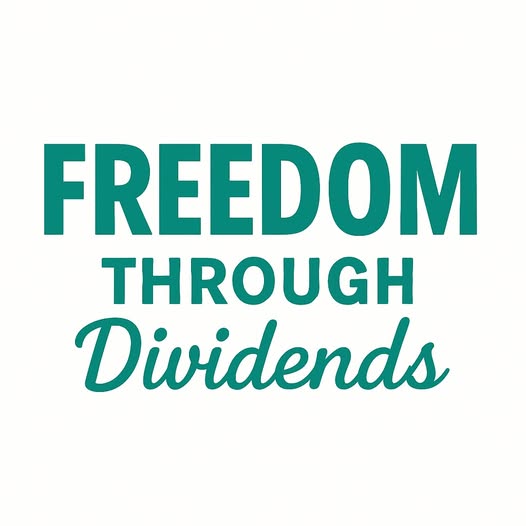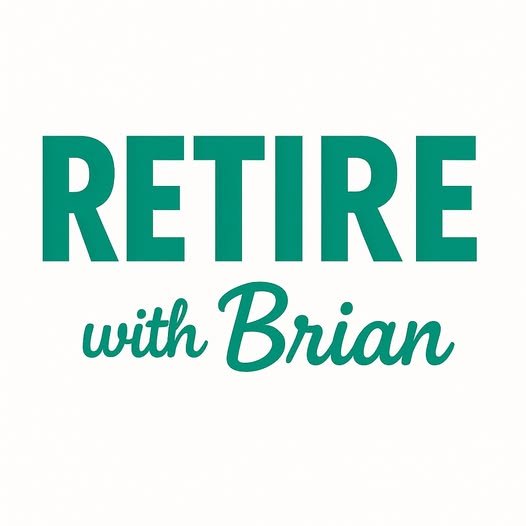Are you tired of living paycheck to paycheck? Do you dream of true financial freedom? Imagine having multiple passive income streams that support your lifestyle without needing your direct effort.
Dividend investing is a smart way to earn regular income. It involves buying stocks in companies that pay dividends. This strategy can lead to steady income and growth over time. By adding options strategies to dividend investing, you can reach financial freedom faster.
You can start building your financial future today. Learn the basics of dividend investing and how to use options to boost your earnings. This guide will show you how to begin.
Key Takeaways
- Understand the basics of dividend investing and its potential for generating passive income.
- Learn how to combine dividend investing with options strategies to enhance your returns.
- Discover the importance of consistent investing and strategic option selling.
- Get started with building multiple streams of passive income.
- Achieve financial freedom through informed investment decisions.
Understanding Dividend Investing Fundamentals
Dividends are a part of a company’s profits given to its shareholders. They offer a real return on investment. For beginners, knowing how dividend investing works is key to making smart choices.
What Are Dividends and How Do They Work?
Companies pay dividends to their shareholders from their profits. These payments can be in cash, stock, or property. For example, a company might give a part of its quarterly earnings to shareholders as cash dividends.
The Power of Compound Growth Through Dividends
Dividend investing is great because of compound growth. When you reinvest dividends, you buy more shares. This leads to more dividends over time. This cycle boosts your investment returns, as the reinvested dividends earn more dividends.
Types of Dividend-Paying Investments
There are many ways to invest in dividends. You can choose individual stocks, ETFs, or mutual funds. Each option has its own benefits and features.
Individual Stocks vs. ETFs vs. Mutual Funds
Individual Stocks: Investing in individual companies can be risky but can also offer high returns. You need to pick companies known for stable dividend payments.
ETFs: ETFs spread out your risk by investing in many stocks or assets. They can follow a specific index or sector, giving you broad exposure to dividend stocks.
Mutual Funds: Like ETFs, mutual funds diversify your investment by pooling money from many investors. They are managed by professionals, which can be helpful if you want expert guidance.
Learning these basics helps you start a dividend investing plan. It could lead to a more stable financial future.
Why Dividend Investing Creates Lasting Wealth
Dividend investing is a powerful way to build wealth over time. It focuses on stocks that pay dividends. This creates a steady income stream that helps balance out market ups and downs.
Passive Income Generation Benefits
One key benefit is the passive income from dividends. Companies pay out a part of their profits to shareholders. This means investors get regular money without having to work for it. This income can be used to grow your wealth or cover living costs, making your finances more flexible.
Dividend Investing vs. Other Investment Strategies
Dividend growth investing stands out because it combines income and growth potential. Studies show dividend stocks often do better than non-dividend stocks over time. This makes them a solid choice for those looking for stable returns.
Real-World Examples of Dividend Wealth Building
Investing in high dividend yield stocks is a smart way to grow your wealth. Many examples show how companies that consistently pay dividends can provide a reliable income.
The Million-Dollar Dividend Portfolio Case Study
Building a million-dollar dividend portfolio is a great example. By picking the right dividend stocks and reinvesting the dividends, you can build a big income stream. It takes patience and a good plan, but it can lead to a lot of wealth.
Using dividend investing, you can build a lasting wealth source. Whether through individual stocks or funds, this strategy can lead to financial freedom.
How to Start Dividend Investing: A Step-by-Step Approach
Starting dividend investing requires smart choices and a clear plan. We’ll guide you through each step to make it easier.
Setting Up Your Investment Account
The first step is to open an investment account. You can pick from many brokerage firms like Fidelity or Charles Schwab. They offer good fees and lots of investment choices. Think about the fees, minimums, and customer service when choosing.
Determining Your Dividend Investment Budget
Then, decide how much to invest in dividend stocks. Look at your finances and set a budget that fits your goals. Try to invest regularly to use dollar-cost averaging.
Creating Your Daily Investing Habit
Being consistent is crucial for dividend investing. Set up automatic transfers from your bank to your brokerage. Use tools and apps to keep track of your investments and stay updated.
Tools and Apps for Consistent Investing
Many tools and apps can help you with dividend investing. Apps like Personal Capital or Dividend.com give you real-time updates and insights. They help you make better choices.
By following these steps and using the right tools, you can start a strong dividend investing plan. Remember, it’s all about being consistent and patient. Dividend investing is a long-term game.
Selecting the Best Dividend Stocks for Beginners
For new investors, choosing the right dividend stocks is crucial for success. You’ll face many options, but not all are good. It’s important to pick wisely.

Key Metrics for Evaluating Dividend Stocks
When looking at dividend stocks, focus on a few key things. Look at the dividend yield, payout ratio, and the company’s financial health. A high yield might look good, but it must be sustainable.
The payout ratio shows how much of earnings go to dividends. A high ratio might mean the dividend is at risk. Companies with strong finances, like low debt and steady earnings, are more likely to keep their dividends.
Dividend Aristocrats and Kings: Reliable Income Generators
Dividend Aristocrats and Dividend Kings have a long history of raising their dividends. They’ve shown they can keep paying dividends even when the market changes. This makes them great for investors looking for steady income.
- Dividend Aristocrats have raised their dividends for at least 25 years.
- Dividend Kings have done this for 50 years or more.
Red Flags to Avoid When Choosing Dividend Stocks
Dividend investing can be rewarding, but there are dangers. A high dividend yield that seems too high is a warning sign. It might mean the company has problems.
Dividend Yield Traps and How to Spot Them
A dividend yield trap happens when a stock’s price drops, making its yield seem too good. To avoid these, look beyond the yield. Watch out for companies with falling earnings, high debt, or facing big challenges.
By focusing on important metrics, reliable dividend payers, and avoiding red flags, you can make smart choices. This approach will help you build a strong dividend portfolio for your long-term goals.
Building a Diversified Dividend Portfolio
A well-diversified dividend portfolio is key for steady passive income. You need a strategic plan. This includes sector allocation, balancing growth and income, and using dollar-cost averaging.
Sector Allocation Strategies
Effective sector allocation is key to managing risk. Spread your investments across sectors like healthcare, technology, and consumer goods. This way, you avoid big losses in any one sector.
For example, healthcare tends to stay stable during tough times. But during growth periods, tech often does better.
Balancing Growth and Income in Your Portfolio
It’s important to balance growth and income in your portfolio. Allocate some to high-growth dividend stocks and some to high-yield dividend stocks. This mix helps you grow your money and get regular income.
Dollar-Cost Averaging with Dividend Stocks
Dollar-cost averaging means investing a set amount regularly, no matter the market. It helps smooth out market ups and downs. This way, you can buy more shares over time, possibly earning more in the long run.
Portfolio Rebalancing Techniques
Regular rebalancing keeps your portfolio on track. It means checking and adjusting your investments to match your goals. Key techniques include:
- Periodic rebalancing: Check and adjust at set times.
- Threshold-based rebalancing: Adjust when your mix strays too far from your target.
Using these strategies, you can build a diversified portfolio. It will give you steady income and help you reach your financial goals.
Tax-Efficient Dividend Investing Strategies
Tax-efficient dividend investing is key to true financial freedom. Knowing how taxes affect your investments can boost your returns.
Understanding Dividend Taxation in the United States
In the U.S., dividends are taxed differently. Qualified dividends are taxed at a lower rate, usually 15% or 20%. On the other hand, non-qualified dividends are taxed as regular income, up to 37%.
Tax-Advantaged Accounts for Dividend Investors
Using tax-advantaged accounts can improve your dividend strategy. Accounts like IRAs and 401(k)s offer tax benefits. This helps your investments grow more efficiently.
| Account Type | Tax Benefits |
|---|---|
| Traditional IRA | Tax-deductible contributions, tax-deferred growth |
| Roth IRA | Tax-free growth, tax-free withdrawals |
| 401(k) | Tax-deferred growth, potential employer matching |
Qualified vs. Non-Qualified Dividends
It’s important to know the difference between qualified and non-qualified dividends. Qualified dividends must meet specific criteria, like being from a U.S. corporation and held for a certain time.
Tax-Loss Harvesting with Dividend Stocks
Tax-loss harvesting means selling stocks that have lost value to realize losses. These losses can offset gains from other investments. This strategy helps manage the tax impact of your dividend investments.
Enhancing Returns with Options Strategies
Adding options strategies to your dividend investing plan can boost your returns. Options trading gives you a range of tools to use with your dividend investing. This can help you reach your financial goals more effectively.
Introduction to the Option Wheel Strategy
The Option Wheel Strategy, also known as WealthSpin, is a well-liked options trading method. It involves selling cash-secured puts and covered calls on a stock you own or want to own. This strategy can bring in regular income from the premiums you receive for selling options.
Selling Covered Calls on Dividend Stocks
Selling covered calls on your dividend stocks can add to your income. By selling a call option on a stock you own, you get a premium. This premium can help offset potential losses or boost your overall returns.
Cash-Secured Puts for Acquiring Quality Dividend Stocks
Using cash-secured puts is another strategy to get quality dividend stocks at a lower price. By selling a put option, you agree to buy the stock at the strike price if it’s assigned. This can be a smart way to add dividend-paying stocks to your portfolio at a discount.
Risk Management When Combining Options and Dividends
While options strategies and dividend investing can be profitable, managing risk is crucial. It’s important to set clear goals, understand the risks of your options trades, and diversify your portfolio. This helps to reduce potential losses.
Effective risk management is essential for boosting your returns with options strategies. By understanding and using these strategies, you can build a stronger dividend investing portfolio. This portfolio can generate consistent income and long-term wealth.
Creating Multiple Streams of Passive Income
Diversifying your income through various passive streams can greatly improve your financial health. By mixing different investment strategies, you can build a strong financial portfolio. This portfolio will give you steady returns.
Combining Dividends and Options for Maximum Cash Flow
One smart way to boost your passive income is by mixing dividend investing with options trading. Dividend stocks offer regular income. Options strategies can increase your earnings or add extra income. For example, selling covered calls on your dividend stocks can give you extra cash. Cash-secured puts can help you buy more quality dividend stocks at a lower price.

Tracking and Optimizing Your Income Streams
To get the most from your passive income, it’s key to keep an eye on your investments. This means watching how your dividend stocks and options trades do. Make changes as needed to keep your portfolio on track with your financial goals.
Scaling Your Dividend and Options Strategy Over Time
As your investment portfolio grows, you can grow your dividend and options strategy. This might mean reinvesting dividends, adding more money to your investments, or trying more advanced options strategies.
Setting Realistic Passive Income Milestones
Setting clear, reachable goals is vital for tracking your progress and staying motivated. For instance, you might aim to boost your monthly passive income by a certain percentage each year. Or, you might aim for a specific total return on investment. By setting realistic goals, you can stay focused on your long-term financial goals.
By using these strategies and staying disciplined, you can create multiple streams of passive income. This will improve your financial stability and freedom.
Conclusion: Your Path to Financial Freedom Through Dividends
You now know a lot about dividend investing and how it can help you build wealth. By using dividend stocks, smart options trading, and a careful investment plan, you can reach financial freedom. This is a great way to make money without much work.
Starting out in dividend investing might seem hard, but it’s doable with the right info and plans. It’s a good choice for beginners because it offers a steady income. This makes it easier to get started on your financial journey.
To start your financial freedom journey, focus on a diverse portfolio and managing your income. Also, grow your strategy as you go. This will help you reach your financial goals.
Start your journey today. Begin building your financial freedom, one trade and one dividend at a time.
FAQ
What is dividend investing, and how does it work?
Dividend investing means buying stocks that give out part of their earnings to shareholders. This way, you get a steady income from the dividends of the companies you own.
How do I get started with dividend investing?
First, open an investment account and decide how much you can invest. Then, pick stocks or funds that pay dividends. Start with companies known for steady dividend payments.
What are the best dividend stocks for beginners?
Beginners should look at stocks with a solid dividend history. Look for Dividend Aristocrats and Kings. These companies are known for their consistent cash flow and rewarding shareholders.
How do I evaluate dividend stocks?
Check the dividend yield, payout ratio, and dividend history of the stock. Also, look at the company’s financial health, growth potential, and industry trends.
What is the difference between qualified and non-qualified dividends?
Qualified dividends are taxed less than regular income. Non-qualified dividends are taxed like regular income. To get the lower tax rate, the dividend must come from a U.S. corporation.
How can I minimize taxes on my dividend investments?
Use tax-advantaged accounts like IRAs or 401(k)s. Also, choose investments that are tax-efficient. Consider tax-loss harvesting to reduce capital gains.
What is the option wheel strategy, and how does it work?
The option wheel strategy involves selling puts and calls on dividend stocks. It can increase your income. But, it requires careful management of risks.
How do I build a diversified dividend portfolio?
Spread your investments across different sectors and regions. You can also use dividend ETFs or mutual funds for diversification.
What is dollar-cost averaging, and how can it help me?
Dollar-cost averaging means investing a fixed amount regularly, no matter the market. It can reduce timing risks and smooth out market ups and downs.
How can I track and optimize my dividend income streams?
Regularly check your investments and adjust your portfolio as needed. Consider taxes and use tools to track your income streams.

